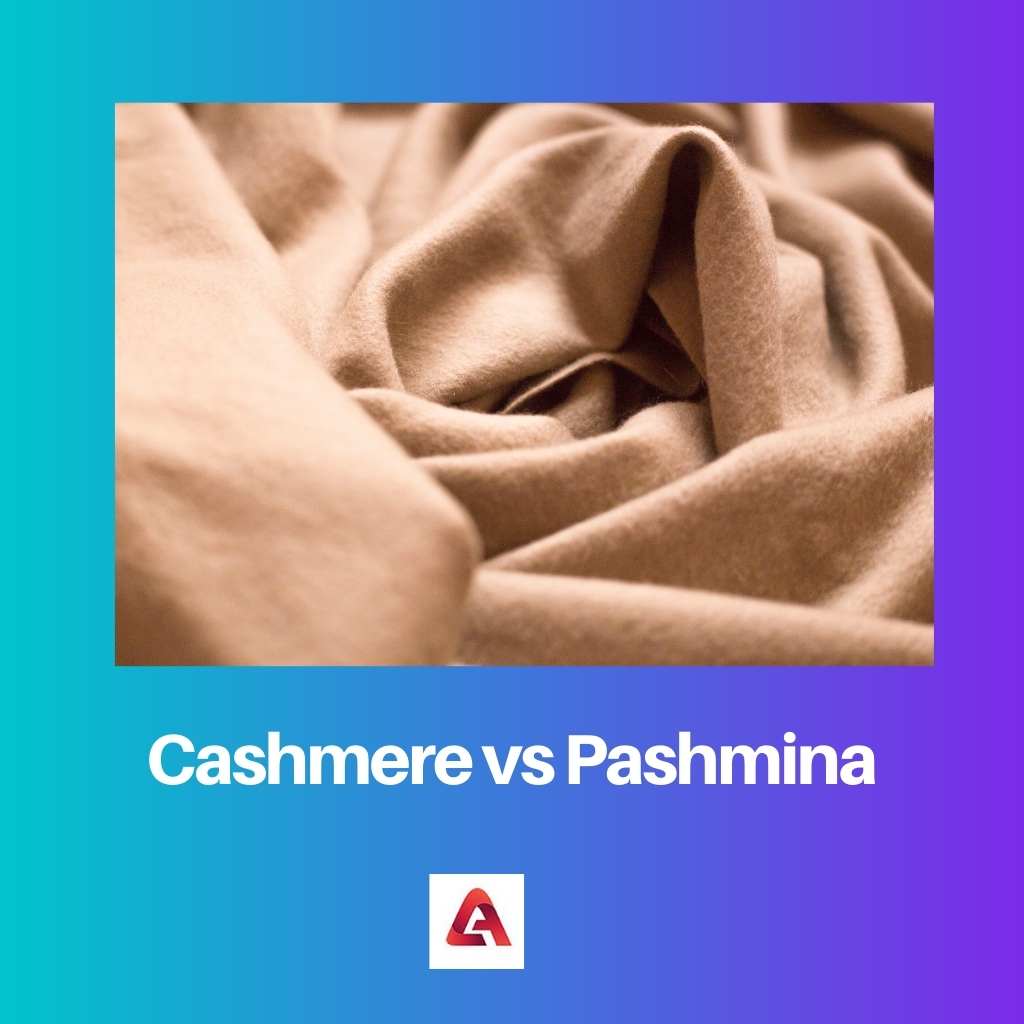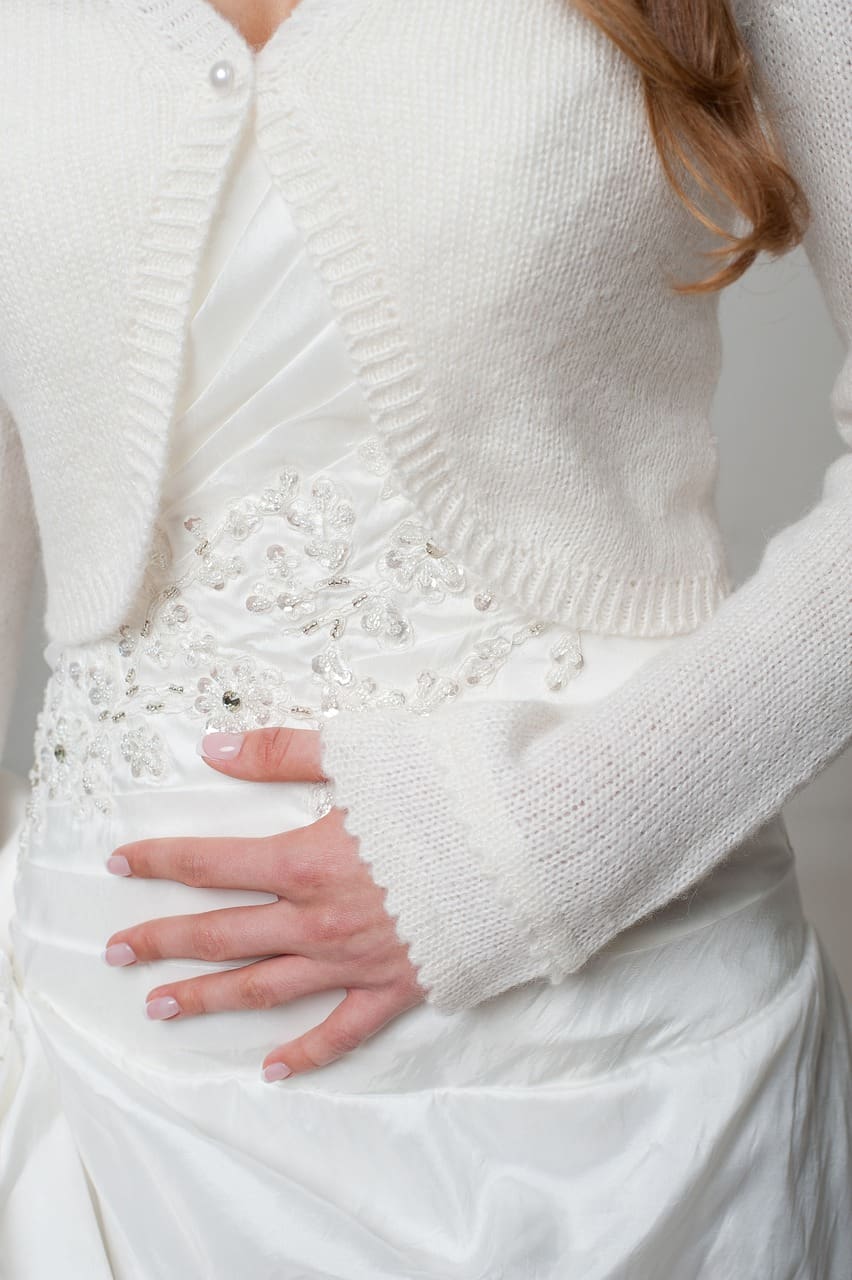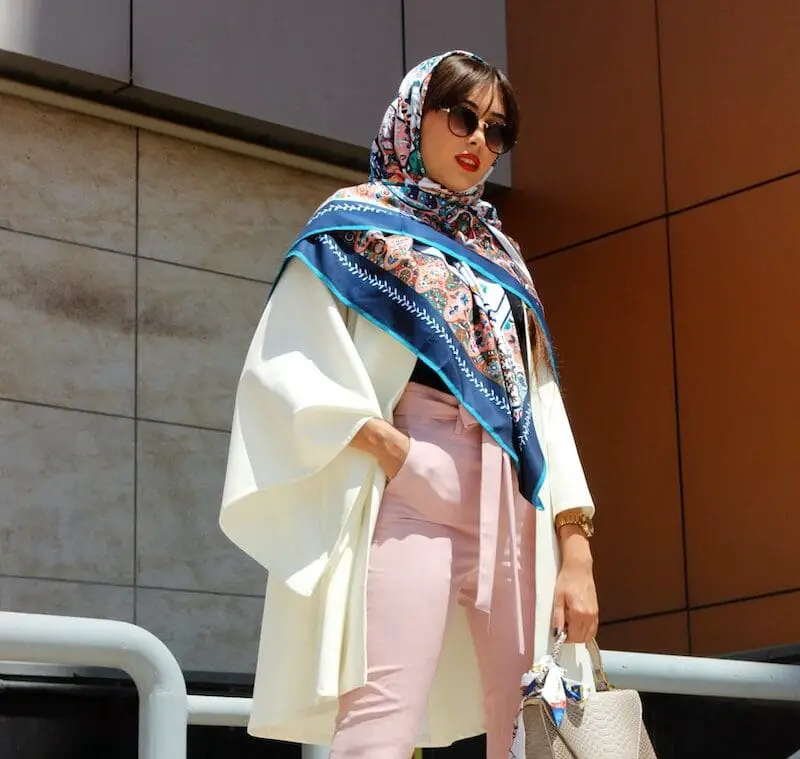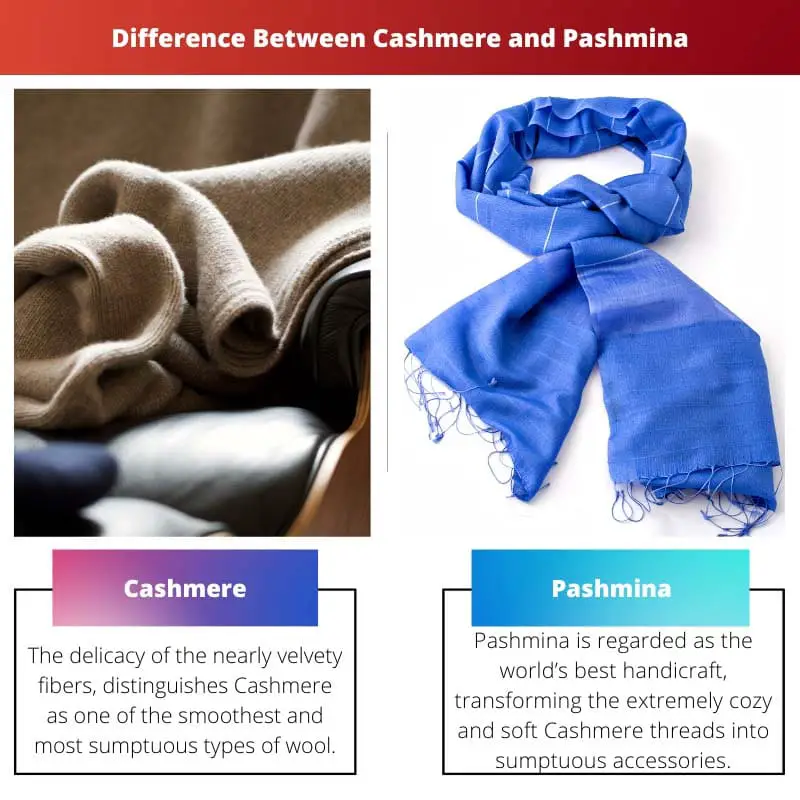Cashmere and Pashmina are a type of woollen fabric that is cosy and luxurious; both are famous around the globe and made using goat’s fur.
But at times, questions arise in our minds relating to their differences. Both seem similar to one another, which makes it difficult to choose between them.
And to answer this question, we have come up with some of their unique differences that will help you out with this question.
Key Takeaways
- Cashmere is a luxurious, soft, and warm wool obtained from the undercoat of cashmere goats.
- Pashmina is a type of cashmere derived from a specific breed of cashmere goat found in the Himalayas, known for its even softer and finer texture.
- Both cashmere and pashmina are sought-after for their exceptional warmth and softness, but pashmina is considered the more premium and exclusive.
Cashmere vs Pashmina
Cashmere refers to the wool that is derived from the Cashmere goat and is known for its exceptional softness and warmth, and it is used to create high-quality clothing. Pashmina is a type of cashmere wool that is specifically derived from the Pashmina goat, a breed found in the Himalayan region.

The delicacy of the nearly velvety fibres distinguishes Cashmere as one of the smoothest and most sumptuous types of wool.
Pure Cashmere can be quite expensive due to the complicated manufacturing operation, where the fibres are extracted by hand from the moulting coats of goats. It’s regarded as one of the most elevated fibres.
Pashmina is regarded as the world’s best handicraft, transforming the extremely cosy and soft Cashmere threads into sumptuous accessories.
The Changthangi Goat’s wool is referred to as “Pashm”, from which the Pashmina wool is extracted.
This unusual goat can only be seen 15000 ft. above sea level in Ladakh, Jammu, and Kashmir, leaving Pashmina even rarer and coveted around the globe.
Comparison Table
| Parameters of Comparison | Cashmere | Pashmina |
|---|---|---|
| Source | Cashmere goats | Changthangi goats |
| Size of Fibers | 16-19 microns | 10-16 microns |
| Durability | More durable than Pashmina | Less durable than Cashmere |
| Use to make | – Scarves – Shawls – Blankets | – Sweaters – Socks – Hats – Scarves – Blankets |
| Softness | Less soft than Pashmina | Softer than Cashmere |
What is Cashmere?
Wool that is obtained from cashmere goats and pashmina goats is known as Cashmere; the old spelling of Cashmere was Kashmir; this is part of northern India where Cashmere is still manufactured.
Origin of Cashmere: Cashmere wool is said to first originate in the Kashmir valley, a piece of terrain tucked among the Pir Panjal Range and the Great Himalayas in the Indian subcontinent.
According to historical context, Cashmere became popular as a fabric for many different kinds of apparel during the 14th century AD, even before there were written allusions to shawls made from Cashmere wool in the 3rd century BC.
Manufacturing Process of Cashmere: As one of the most renowned and luxurious fabrics, Cashmere has made a unique place in the world of fabric.
And the process of making Cashmere fabric from the wool of a goat includes different procedures. Let’s have a look at the effort by which we get the best fabric in the world.
1. Collecting: When spring arrives, goats start to moult or shed their fur. The ancient method of hand-combing the wool to liberate both the down and guard strands is still preferred today due to the higher yield of pristine Cashmere wool.
After gathering the wool, the workers check for any leftover guard hairs or impurities that must be eliminated for the wool yarn to be as smooth and pliable as possible.
2. Purification: Cashmere wool must be cleansed before it can be colored, spun, or stitched into clothes. This eliminates any remaining dirt, unwanted materials, and surplus animal oils from the unprocessed fibre.
Spinning: The spinning mules (a device used to spin fibres) are the actual powerhouses in the armoury of the wool maker. These devices process many spools of cashmere that rapidly produce yarn of varied thicknesses that may be wound into cones for final quality assurance.
It’s at this moment that it’s Cashmere wool yarn, set to be woven into a variety of high-end goods.
Feature of Cashmere: As we know, Cashmere is one of the most famous and desired fabric, but what are the qualities of Cashmere that makes it so favourable? Well, here are some of the lists of Cashmere’s quality that will help us find the answers:
- Extraordinarily soft
- The original colors of raw Cashmere are white, grey, and brown, however, they can be dyed into different beautiful colors.
- Silky texture
- Moisture-wicking and extremely cosy.

What is Pashmina?
Pashmina is the utmost sophisticated variant of Cashmere and one of the highest quality wools accessible in the world.
Pashmina wool is hard to come by since it is only produced at a specified time of year by Pashmina goats that yield 80-170 grams of wool per year.
Origin of Pashmina: Pashmina has a long history dating back to 300 B.C. However, a Sufi saint named Mir Syed Ali Hamdani introduced Pashmina to Kashmir from Iran in the 13th century A.D. Hamdani had a team of artists with him who trained Kashmiri craftsmen how to weave distinct shawls out of Pashmina wool collected from Kashmiri goats living in the upper Himalayas regions of Ladakh. Throughout this time, the market of Pashmina thrived.
Manufacturing Process of Pashmina: Pashmina is not only a name of a certain fabric but also the name of a highly renowned and prestigious brand.
It is one of the most luxurious fabrics we find on this planet. But how these astonishing fabrics are made? To answer these questions, let’s glance at the procedure by which these fabrics are made.
1. Spinning: The yarn is gathered every year and then spun by hand. The raw material is stretched and cleaned before passing through the spinning process to eliminate all impurities.
2. Weaving; Because of the vibrations created by the power looms, weaving Pashmina wool is extremely sensitive. As a result, handlooms are used to weave the traditional 100% Pashmina Shawls.
3. Coloring: Dyeing, like spinning, is done entirely by hand. Azo-free and metallic dyes are utilized throughout the procedure to create completely eco-friendly shawls.
Feature of Pashmina: The popularity of Pashmina is at its peak, there are several features and qualities of Pashmina that make it extremely popular. Some of the qualities that make it a unique and awesome fibre are listed below:
- It is extremely cosy and warm.
- It has a natural crimp that is smooth and fluffy.
- Pashmina fabric is lighter, thin, and permeable.
- It is a fabric with a rich sheen and a graceful draping.

Main Differences Between Cashmere and Pashmina
1. Cashmere is warmer than Pashmina due to its dense fibre.
2. A machine makes cashmere, while Pashmina is made by hand.
3. Cashmere is widely available as compared to Pashmina.
4. Cashmere is easy to spin, while Pashmina is difficult to spin.
5. When compared to Cashmere, Pashmina has a finer and softer texture.

- http://nopr.niscair.res.in/handle/123456789/19255
- https://link.springer.com/article/10.1007/BF02361270
